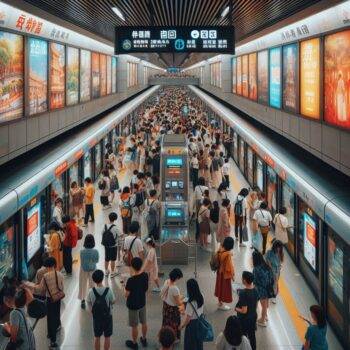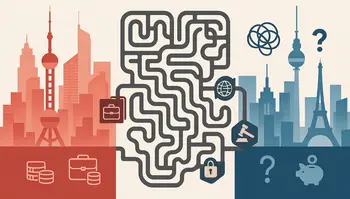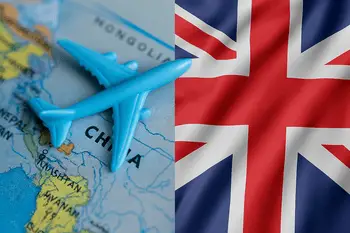
China boasts one of the most extensive and efficient public transportation systems in the world.
Whether you’re a resident or a traveler, understanding the costs and nuances of the system can help you navigate the country with ease and save money.
This guide explores the various modes of public transport available, their costs, tips for maximizing your travel budget, and additional considerations like accessibility, safety, and environmental impact.
Modes of Public Transport in China
China offers a wide range of public transportation options, each with its own cost structure and unique features.
Here’s a breakdown:
1. Metro Systems
- Coverage: Major cities like Beijing, Shanghai, Guangzhou, and Shenzhen have extensive metro networks, with smaller cities like Chengdu and Xi’an also offering well-developed systems.
- Cost: Fares typically range from ¥2 to ¥10, depending on the distance traveled. Monthly passes and discount cards are available for frequent riders.
- Payment Methods: Most metro systems accept transport cards (e.g., Beijing’s Yikatong or Shanghai’s Public Transport Card) and mobile payment apps like Alipay and WeChat Pay.
- Accessibility: Metro systems in major cities are generally wheelchair-friendly, with elevators, ramps, and priority seating available.
- Example: In Shanghai, fares range from ¥3 to ¥15, and a monthly pass costs around ¥200. Learn more about Shanghai Metro fares here.
2. Buses
- Coverage: Buses operate in urban, suburban, and rural areas, often reaching places not covered by metro systems.
- Cost: Standard fares range from ¥1 to ¥2, with air-conditioned and express buses charging slightly higher fares. Many cities offer flat-rate monthly passes.
- Payment Methods: Cash is accepted, but transport cards and mobile payments are more convenient.
- Example: In Beijing, standard fares are ¥2, and a monthly pass costs around ¥100. Beijing Public Transport Group provides detailed information.
3. Taxis and Ride-Hailing Apps
- Availability: Taxis are widely available in cities and towns, while ride-hailing apps like Didi Chuxing dominate the market.
- Cost: Initial fares start at around ¥10, with additional charges per kilometer. Night rates and peak-hour surcharges may apply. Ride-hailing apps often have similar pricing structures but may offer discounts or promotions.
- Tips: Use apps like Didi (available in English) to avoid language barriers and compare fares. Download Didi here.
4. High-Speed Rail (HSR)
- Coverage: China’s high-speed rail network is the largest in the world, connecting major cities and regions.
- Cost: Ticket prices vary based on distance and class. For example, a trip from Beijing to Shanghai costs ¥550 for second class, ¥935 for first class, and ¥1,750 for business class.
- Booking Tips: Tickets are often cheaper when booked in advance. Use official platforms like 12306.cn or apps like Ctrip for bookings.
- Environmental Impact: High-speed rail is considered one of the most eco-friendly long-distance travel options.
5. Standard Trains
- Coverage: Standard trains serve cities and rural areas, offering a more affordable alternative to high-speed rail.
- Cost: Fares vary based on distance and seat class. For example, a hard seat ticket from Beijing to Xi’an costs around ¥150 to ¥250.
- Tips: While cheaper, standard trains are slower and less comfortable than high-speed rail. They are ideal for budget travelers.
6. Shared Bikes
- Availability: Bike-sharing programs like Mobike and HelloBike are common in urban areas.
- Cost: Typically ¥1 per 30 minutes, with monthly and annual subscriptions offering lower rates.
- Environmental Impact: Shared bikes are an eco-friendly option for short distances.
- Example: In Shanghai, a monthly subscription costs around ¥20. Learn more about Mobike here.
Additional Considerations
1. Accessibility
Most major cities have made significant strides in improving accessibility for people with disabilities. However, rural areas may lack such facilities. Always check ahead if you require specific accommodations.
2. Safety and Security
- Metro and Buses: Be cautious of pickpockets, especially during peak hours. Keep your belongings secure and avoid crowded areas when possible.
- Taxis and Ride-Hailing Apps: Use licensed taxis or reputable apps like Didi to ensure safety. Avoid unregistered vehicles.
3. Environmental Impact
- High-speed rail and shared bikes are among the most environmentally friendly options.
- Buses and metros also have a lower carbon footprint compared to private vehicles.
4. Payment Methods
- Transport Cards: Cards like Beijing’s Yikatong and Shanghai’s Public Transport Card offer convenience and discounts.
- Mobile Payments: Apps like Alipay and WeChat Pay are widely accepted and often more convenient than cash.
Tips for Maximizing Your Travel Budget
- Use Discount Cards and Passes: Many cities offer monthly passes or discount cards for unlimited travel on metro and bus systems.
- Travel During Off-Peak Hours: Train tickets are often cheaper during non-peak times. Plan your travel accordingly.
- Leverage Ride-Hailing Apps: Use apps like Didi to compare fares and take advantage of promotions.
- Opt for Shared Bikes: For short distances, shared bikes are cost-effective and eco-friendly.
- Book Tickets in Advance: High-speed rail tickets are cheaper when booked early. Use official platforms like 12306.cn.
Regional Variations in Public Transport Costs
While this guide focuses on major cities, it’s important to note that costs and availability can vary significantly in smaller cities and rural areas.
For example:
- In smaller cities like Kunming or Harbin, metro fares are often capped at ¥5.
- Rural areas may rely more on buses, with fares as low as ¥1.
Conclusion
China’s public transportation system offers a range of options to suit different needs and budgets.
Whether you’re commuting within a city or traveling between regions, understanding the costs and nuances of the system will enhance your experience and help you save money.
By leveraging discount cards, mobile apps, and eco-friendly options, you can make the most of your travel budget while enjoying the convenience of one of the world’s best public transport networks.
For more information, visit official resources like:


